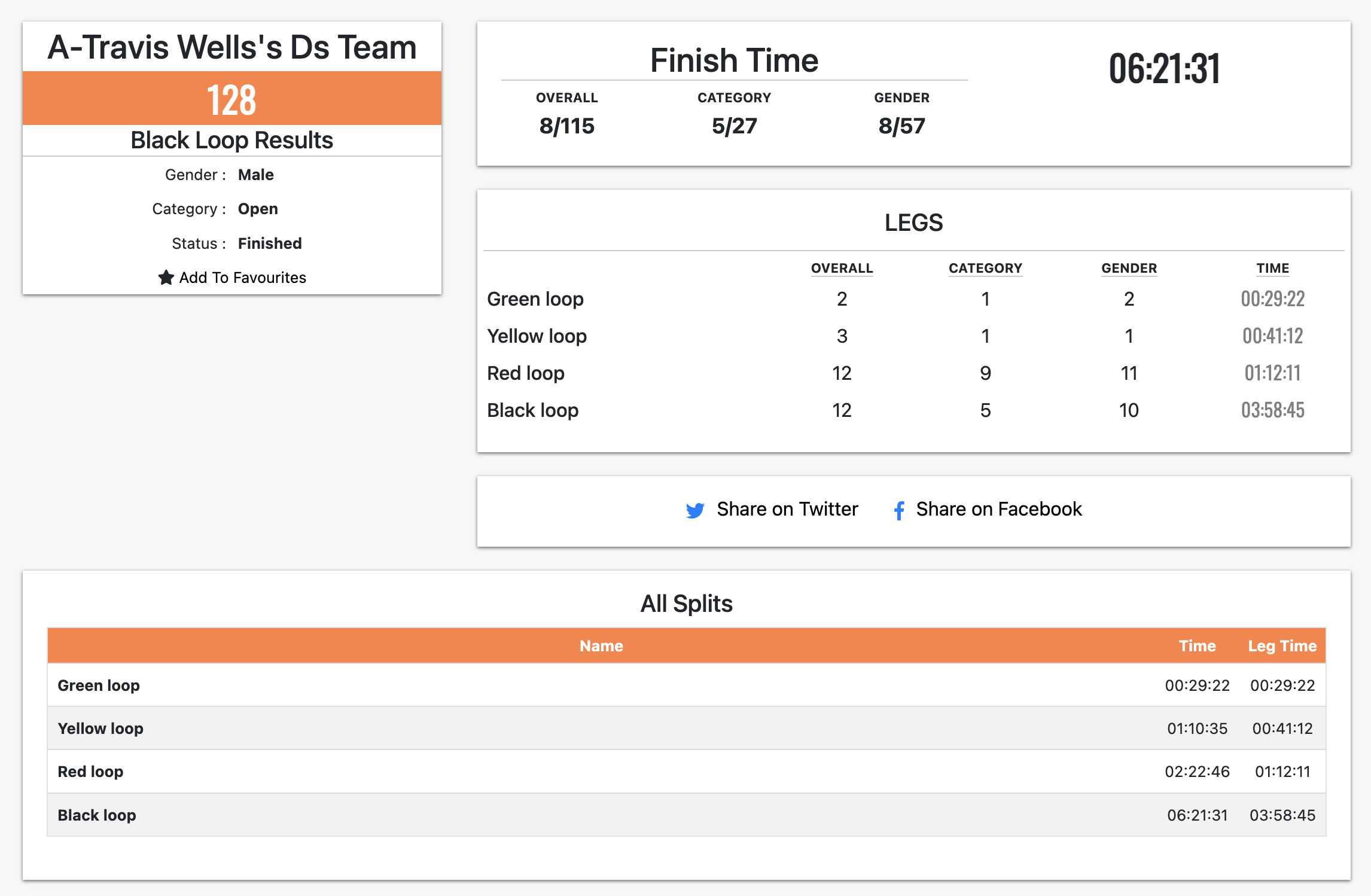If you ever completed your last leg at BRR (or SMR) and thought, man, that felt great, I wish we could stay here one more day and run all of that distance all at once tomorrow, then this race is for you. If you ever thought, wait, instead of paved mountain roads, let’s run on wooded trails instead, then this race is for you. And if you ever thought, you know what would make this trail even better? a quarry-full of loose rocks, moss-covered boulders, and mud pits, then this race really is for you.
So there is your disclaimer.
Unfortunately for Doug and Bobby, they were not given any disclaimer and instead met up with 8 Peak City pax and about 2,000 other runners at Big Bear Lake campgrounds on the West Virginia-Maryland border for the Ragnar Appalachia trail race. This race had everything. Camping, glamping, swag stores, food trucks, beer tents, live music, movie nights, portajohns, hot showers, hashers, swingers, massage booths…more than we were able or inclined to explore.
This backblast also might have more than you would like to explore. Feel free to skip around:
- Recap
- Course Details
- Lessons Learned
- Name-o-rama
Recap
When you arrive, you drive up to a campsite where you have a choice of setting up in a tent city packed with hundreds of other contestants, spreading out on a big field or taking to the woods. Naturally, we took to the woods. The slight inconvenience of a moat separating the woods from the field was quickly solved with a makeshift bridge constructed by our Rooney-upgrade. Soon, we had set up three tents, one decked-out shelter, another buggy one, a recovery zone with all the PT/SM toys, and too many inflatable schwaggins to count.
 Figure: Our campsite was legit, complete with spongy-soft, moss-carpeted floors.
Figure: Our campsite was legit, complete with spongy-soft, moss-carpeted floors.
And then, we had to wait. For people used to posting at 5:30am, the noon start time for the ultra participants gave us a little too much down time to get antsy before the start. Fortunately, there was plenty to peruse at Ragnar village, and about half the pax bought the same highlighter pink-and-blue Boco hats, since we still don’t have that Peak City one.
Maybe it was the wait, or something about the elevation, or the rocky trail conditions, but we all felt a little thrown by the first loop. Specific details on the loops can be found, later, but the basic premise of the race for Black loopers goes like this: the first day, you run three progressively longer and harder trails that total about 17 miles, and the second day, you run a single-track 17 mile trail.
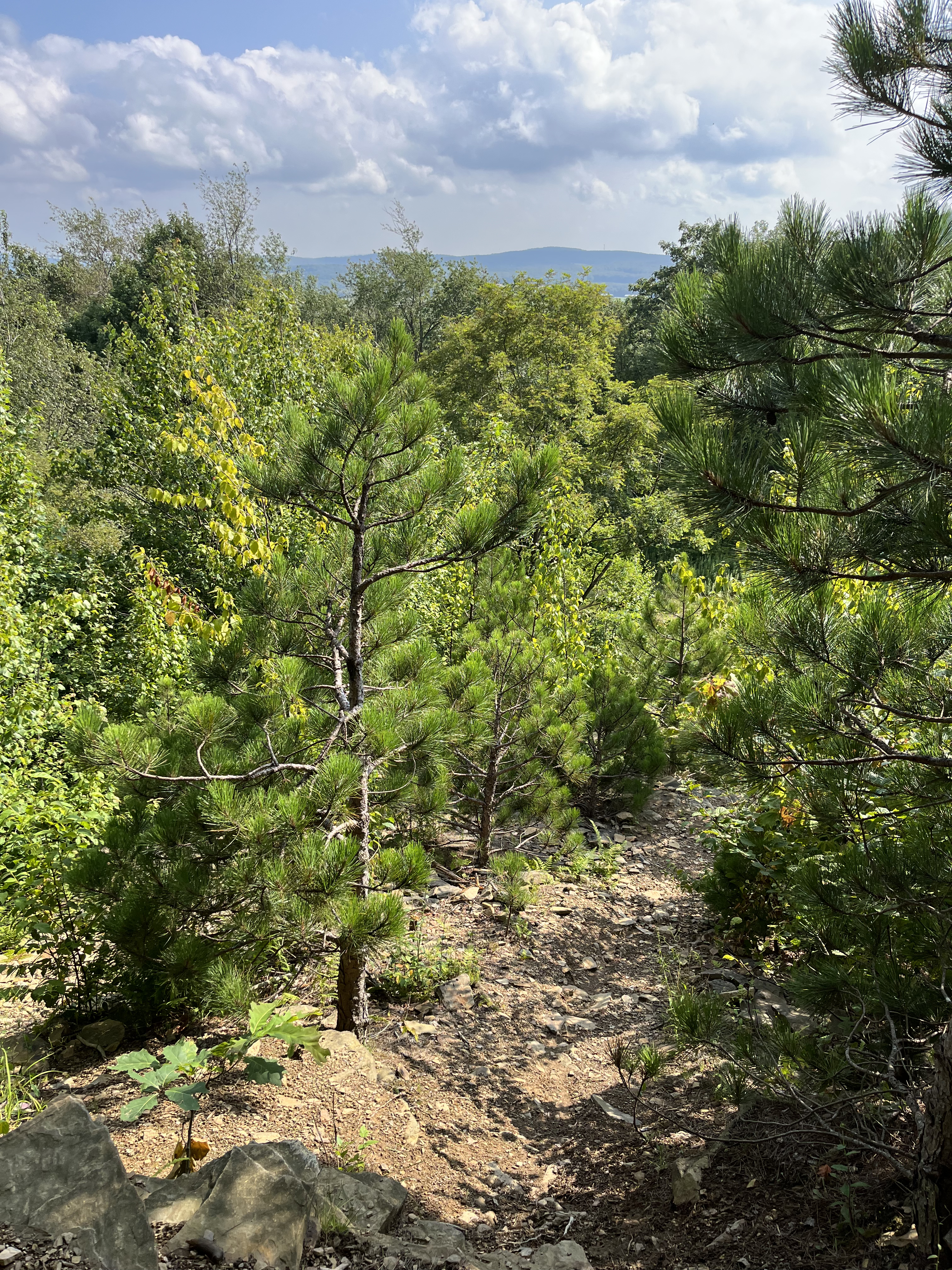 Figure: Quite rocky, a little treacherous even, but beautiful views when you dared to look around!
Figure: Quite rocky, a little treacherous even, but beautiful views when you dared to look around!
Another twist to this race is that you run each loop with a buddy, and your two-man team’s time is based on the last man to cross. This buddy system was a nice tie-in to F3 principles of accountability, PUT6, and leave no man behind. But these were not necessarily principles that every team displayed.
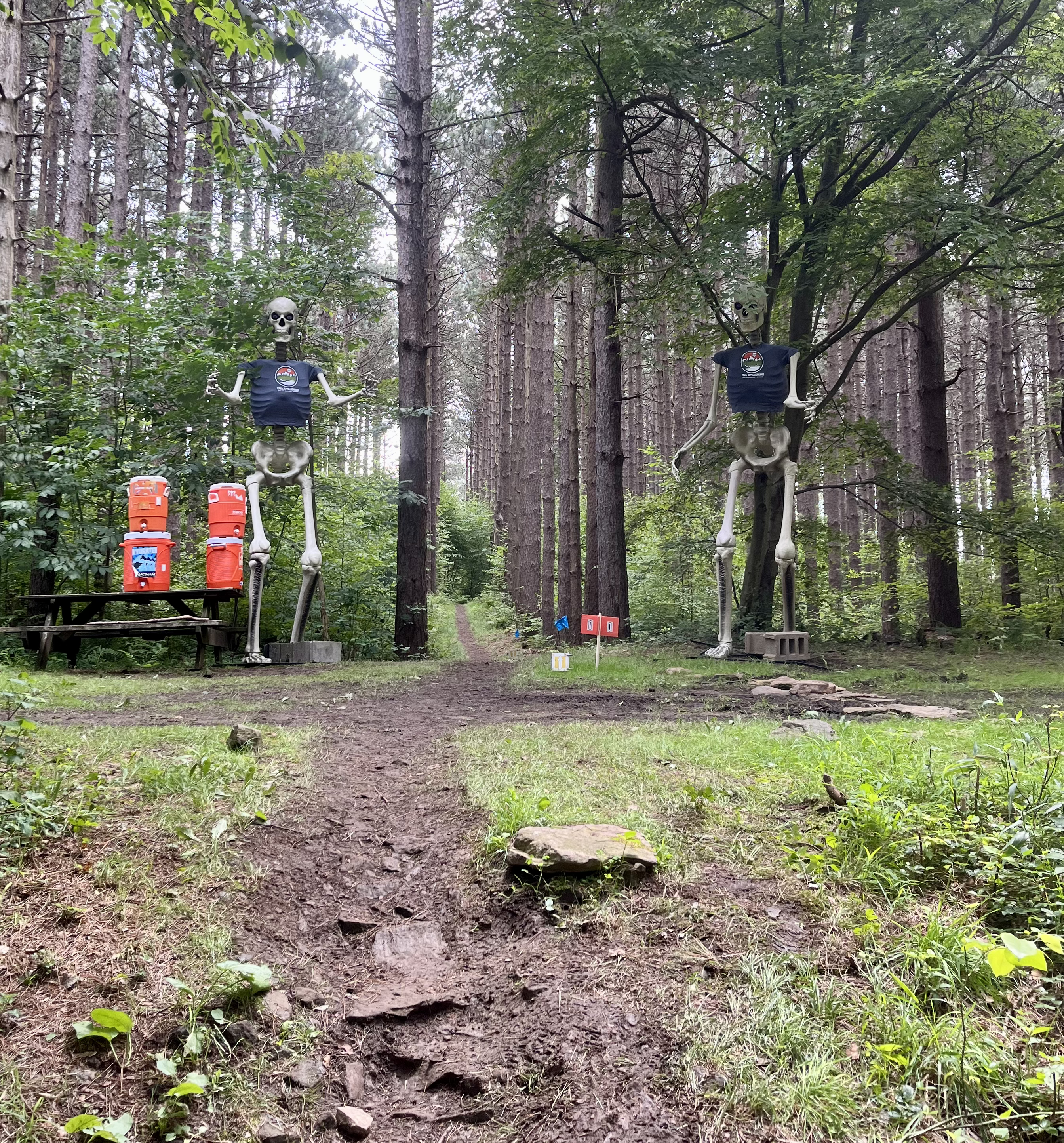 Figure: Hopefully you don’t leave your buddy quite as skeletal as these dudes.
Figure: Hopefully you don’t leave your buddy quite as skeletal as these dudes.
We all got done with the first loop before 1 o’clock, and then had to wait until 4 o’clock for the second…and 9 o’clock for the last and rockiest of all. All of the trails were much more technical than we thought. On paper, they seemed comparable to Umstead with just a bit more elevation gain, but in person, they were much rougher, rockier, and muddier. The course finish through the village was an adrenaline-racing close, especially at night.
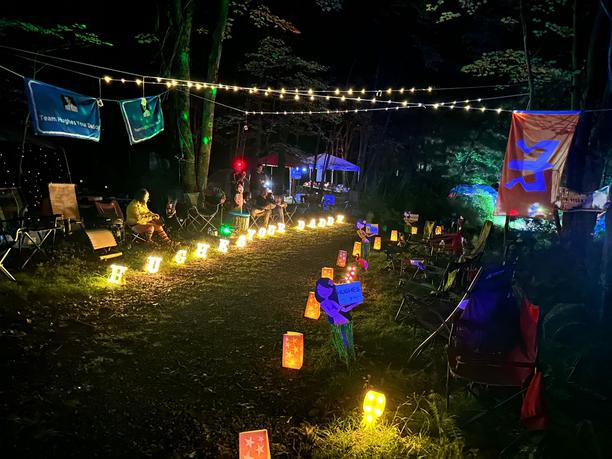 Figure: Not pictured was the dizzying rainbow finish.
Figure: Not pictured was the dizzying rainbow finish.
For those of us who brought a sleeping bag and earplugs to shut out the team of firemen next to us who talked nonstop through the night, the sleeping situation was pretty good. Weather-wise was perfect, mostly sunny, upper 70s in the day, low 60s at night, and still looked beautiful even when we chose to leave after the race instead of camp because of a thunderstorm and tornado warning.
The long course started off strong, but by the full aid station a little more than halfway through, it seemed like everyone was feeling it. Past that point, there was a lot less running and a lot more hiking. Something like 5 of 25 teams were pulled off course, which was apparently the first time they’d had to do this in all the years they’ve been hosting the event at WV (since 2017). That said, the guy running the aid station was a bit odd, so take it with a grain of (base) salt.
While you have to start, get to the aid station, and finish together, you are otherwise free to leave your buddy. However, it usually doesn’t make that big of a timing distance. It might be good to run on your own a bit if one of you just needs a sort of pacing break, but otherwise, it seemed very odd to me how many of the other teams were split up…some of them for like miles and miles. Despite running with a buddy, it seems like everyone still has their own experience on the course, or maybe unique experiences with the same thing, like how you both approach nutrition or pacing or walking vs. running. YHC enjoyed the experience a lot more than I anticipated, because usually these sorts of races, you run alone.
Overall, there is a palpable energy to Ragnar events that is worth experiencing at least once. Where else could a single pax get pulled from a race, propositioned to join a swingers club, and married to a sugar mama all within a 12-hr window? Or perhaps you will go camping for the first time ever, or get electro-schock therapy, or help stitch up somebody’s cuts up, or be the hero who brought cash when the pizza place’s card reader dies. You won’t know until you sign up!
Course Details
For more information, you can also check out the Ragnar website.
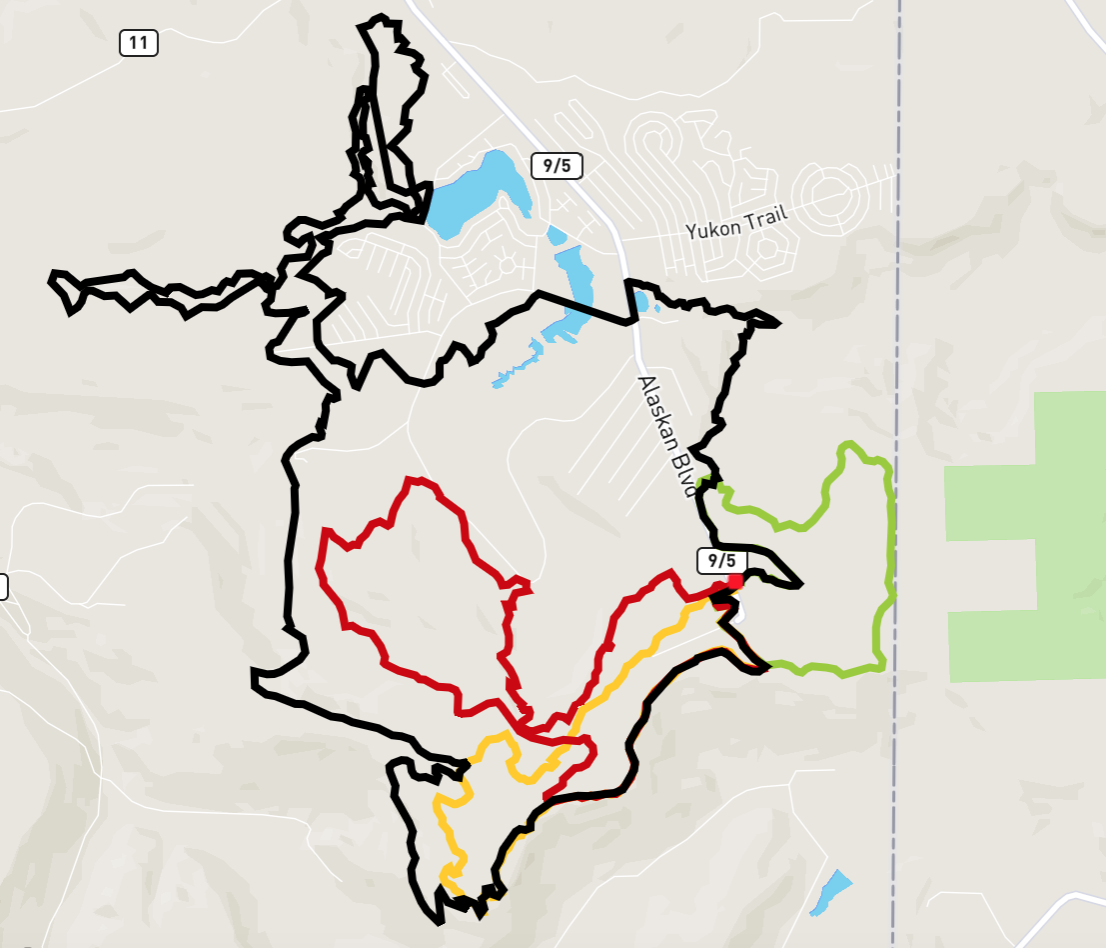
A more detailed breakdown of the loops.
| Color | Distance (mi) | Elevation (ft) | Sample Pace* (min/mi) | Description |
|---|---|---|---|---|
| Green/Easy | 3.5 | 427 | 9:05 | Technical, loops event area, rolling mostly downhill. Hard to break away because every starts together and it’s very rocky at first. |
| Yellow/Int | 4.6 | 579 | 10:13 | Technical, rooty, charming, mostly uphill. When you get to the pine needles, there is a pretty overlook. |
| Red/Hard | 6.5 | 1050 | 12:00 | Very technical, have to stop to climb through boulders and ledges a lot, downhill near the start with loose gravel and mud, and a final big climb towards the end. |
| Black/Very Hard | 17.1 | 2551 | 13:38 | Very technical. 3 aid stations at ~5.5, 10.5 (with snacks), and 13.5 miles. The first half felt harder/rockier, but between Station 2 and 3, you have the 3 mile uphill climb. |
| TOTAL | 31.7 | 4607 |
* Sample pace is from Clockwork’s results.
Lessons Learned
Training and Running
- This is not a “If you can do a bootcamp, you can do this!” sort of event…although oddly there were a lot of people that probably shouldn’t have been there
- You need to train because it can be dangerous…we all agreed we should have trained more
- Prioritize trail running over long-distance road running
- Train a lot more with your buddy than you normally would…it can help figure out how much you push or pull the other, pacing, things like who leads, how to check in with each other while running, etc.
- Some strength days for legs and also back/traps would be good
- You will be doing a lot of footwork…feet and ankles will get sore
- Try to get ahead early, or be patient because you might be stuck in a pack for a mile or so until you can break out
- Don’t overdo the pace early on, because it will catch up with you
- YHC adopted a “walk uphill, run flats and downhill” approach
Fuel
- You will have plenty of deep-fried lunch/dinner food options while there because of the food trucks
- They also have breakfast trucks, but the offerings are more limited…prepacking something like cold oats or bagels would be great
- BYO healthy food, like fruits and vegetables
- Staying ahead of the calorie deficit is hard, especially with the weird run times
- The long run the next day means that you need to eat dinner and breakfast or have some sort of plan for nutrition to get you through the long run
- They have tons of samples…take some if you have a safe amount of time or just save for later; don’t try something new on race day
Recovery
- We had a tarp spread out that functioned as a recovery zone for us
- Things like foam-rollers, massage guns, tense/10s? units, lacrosse balls
- Air chairs and zero-gravity chairs were super nice to stretch out
- They had a station with compression boots which was definitely worth the money ($10 for 10 min, up to 40 min)
Site logistics
- Site in the woods was great because it was secluded but also near enough to the portajohns
- For the night loop, bring your towel and change of clothes down with you so that when you get back you can immediately get into the shower and not waste time when the line gets super long
- Preplanning for the race beforehand was pretty simple, although they have a lot of scattered and somewhat confusing information
Comparison vs. BRR/SMR and similar relays
- More fun being in the woods and camping with everyone
- Nice not to have to drive, way less logistics involved
- Trails are harder than roads, both in the moment and in terms of how sore you feel afterwards in weird places like traps or back
- Much easier to do recovery activities in between loops
- Overall, you save money because you don’t have van and lodging rentals, but you do spend way more money on site because they sell a lot of stuff
Name-o-rama
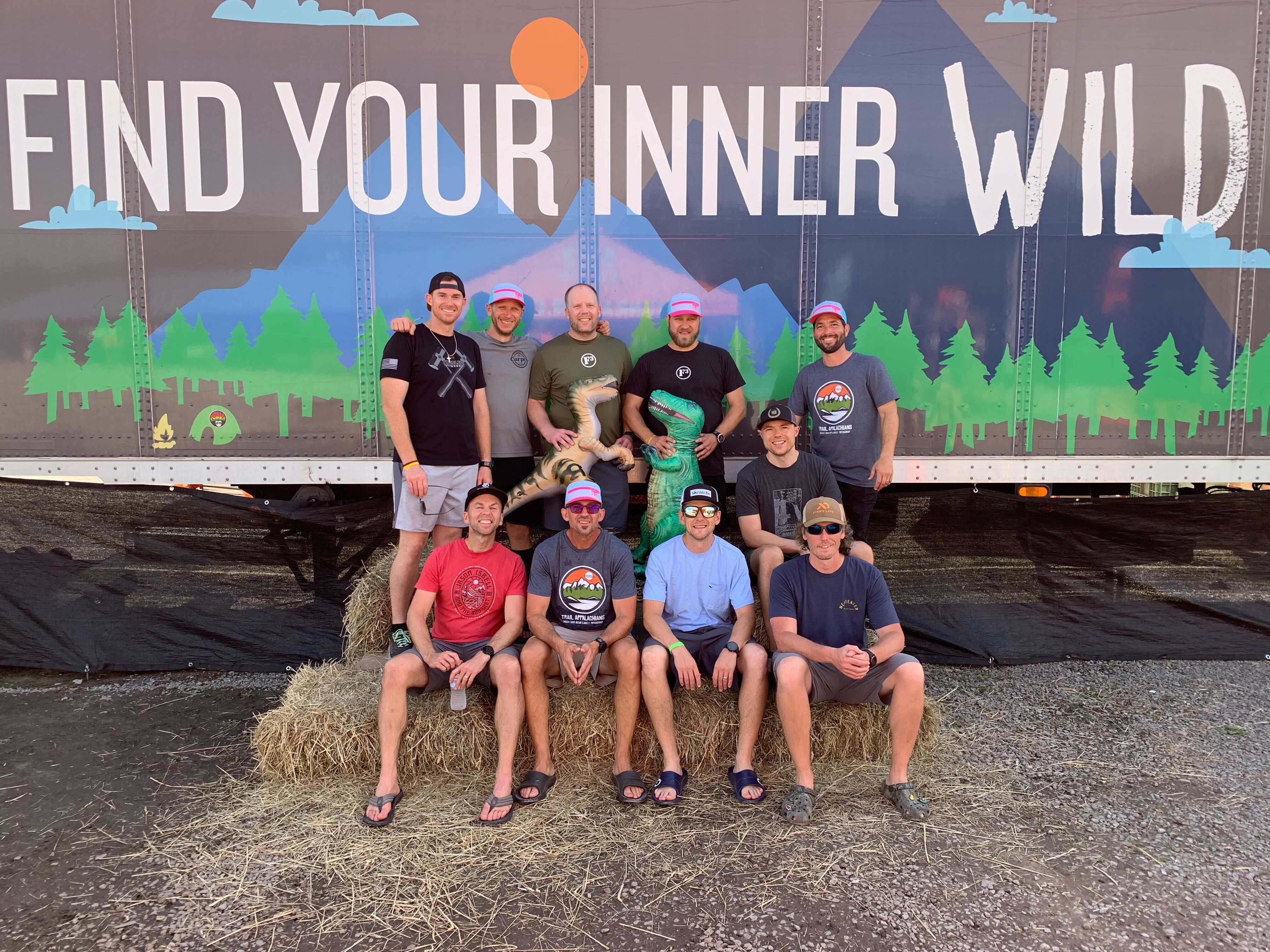
Team naming was clearly not our strong suit. We should have used our BRR name, Peak City Happy Dinos, as dinosaurs was the race’s theme for the year, with the volunteers dressed up, photo ops with stuffed dinos, and collectible figurines scattered throughout the courses.
| Team Name | Runner 1 | Runner 2 |
|---|---|---|
| F3 Peak City | Triple Lindy | Schlitz |
| F3 Dusty Grundles | Hamm | Pongo |
Mike Hubbell’s Team* | 16 Steves | Clockwork |
| Travis Well’s Team | Mr. Safety | Zero Drop |
| DDD and Bobby Light | Doug | Bobby |
* renamed to “Peak Dust” in super-official Sharpie
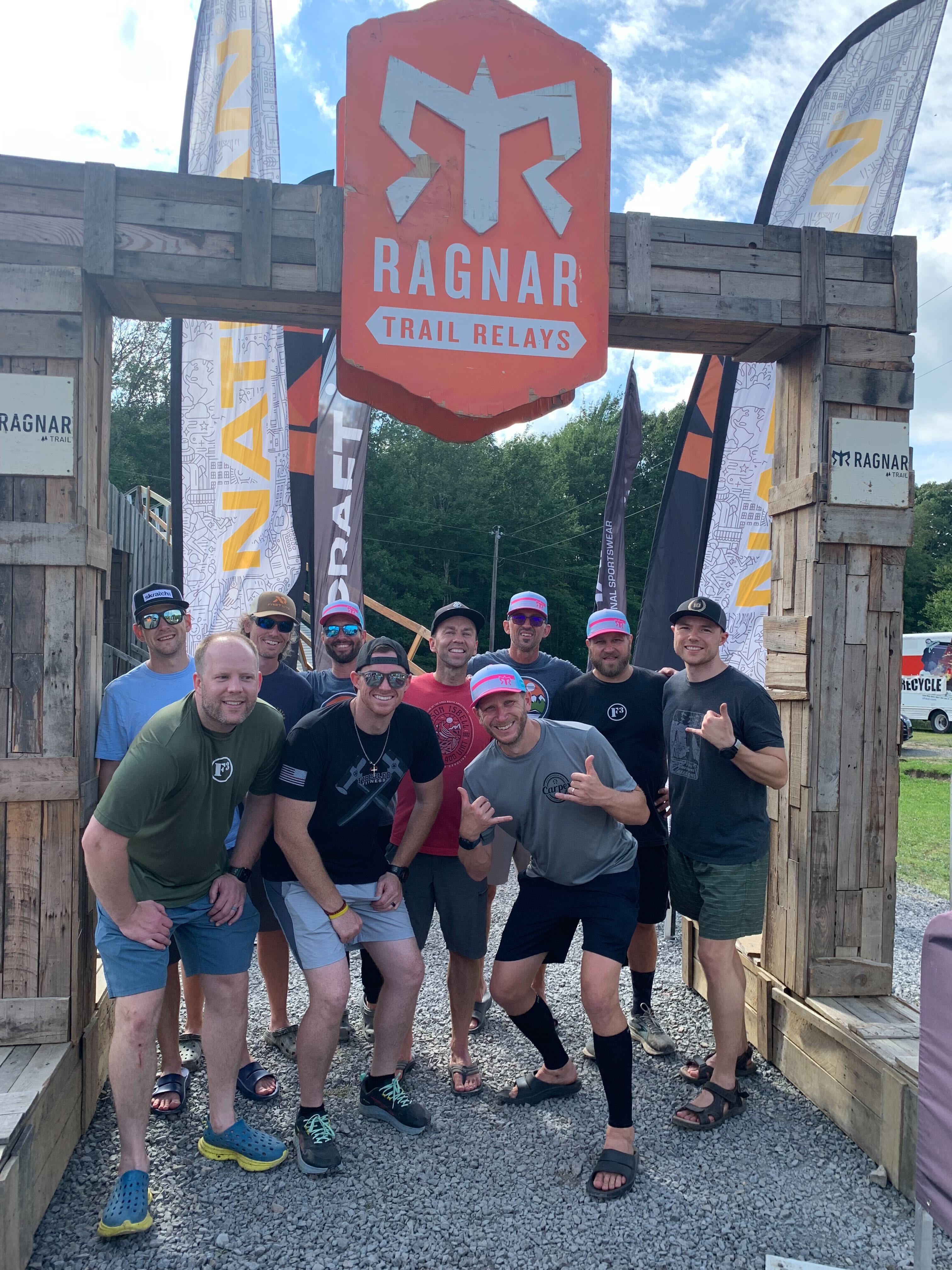
Aaaand we had a Top 5 finishing team, in honor of our dearly missed brother Travis Wells. Strong work, Mr. Safety and Zero Drop! 👏👏👏
